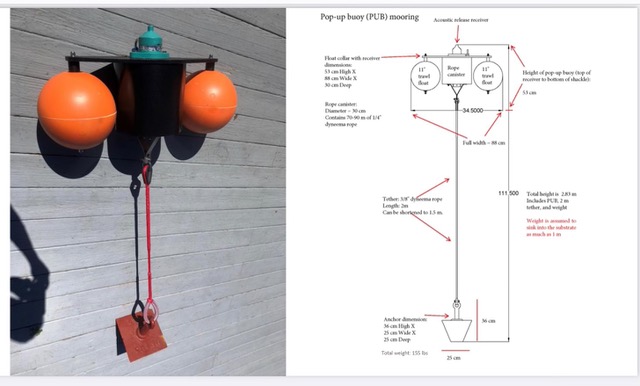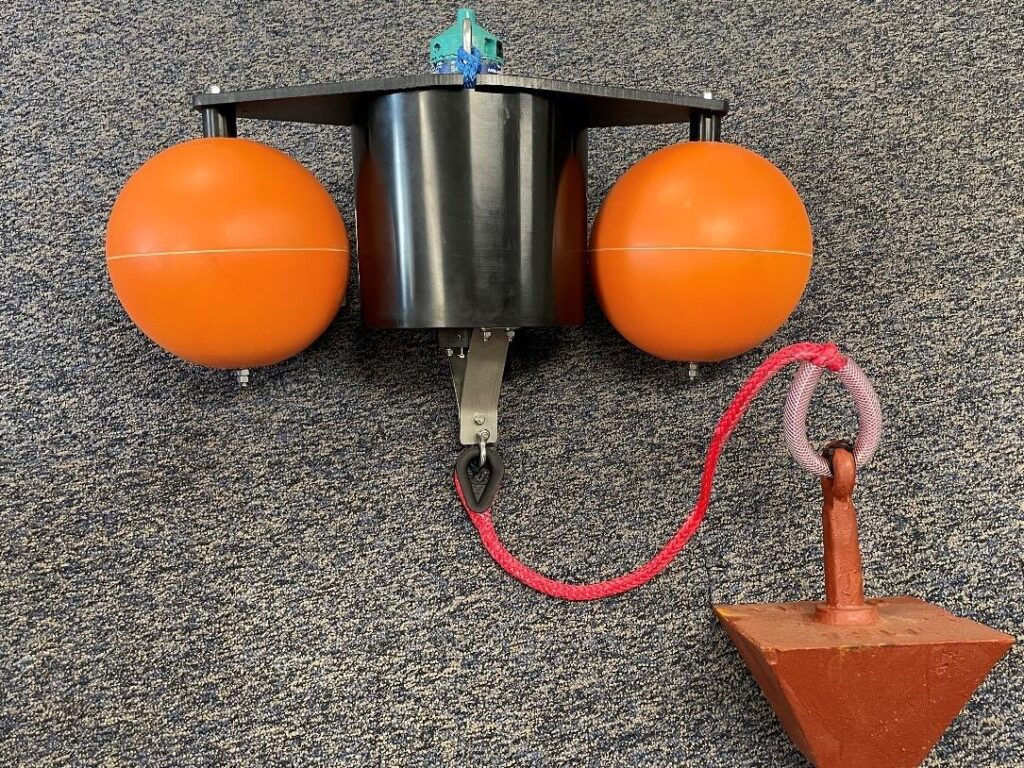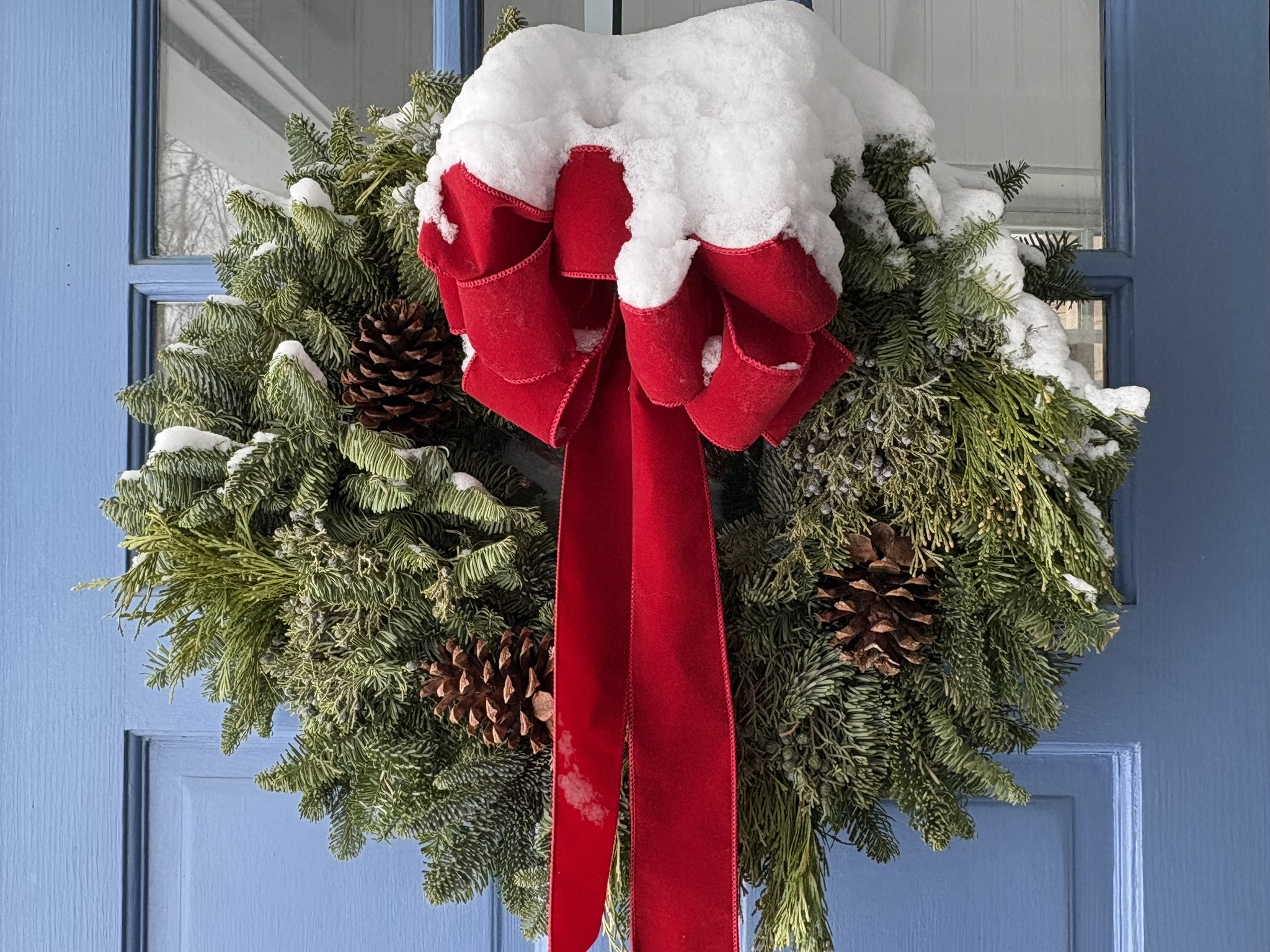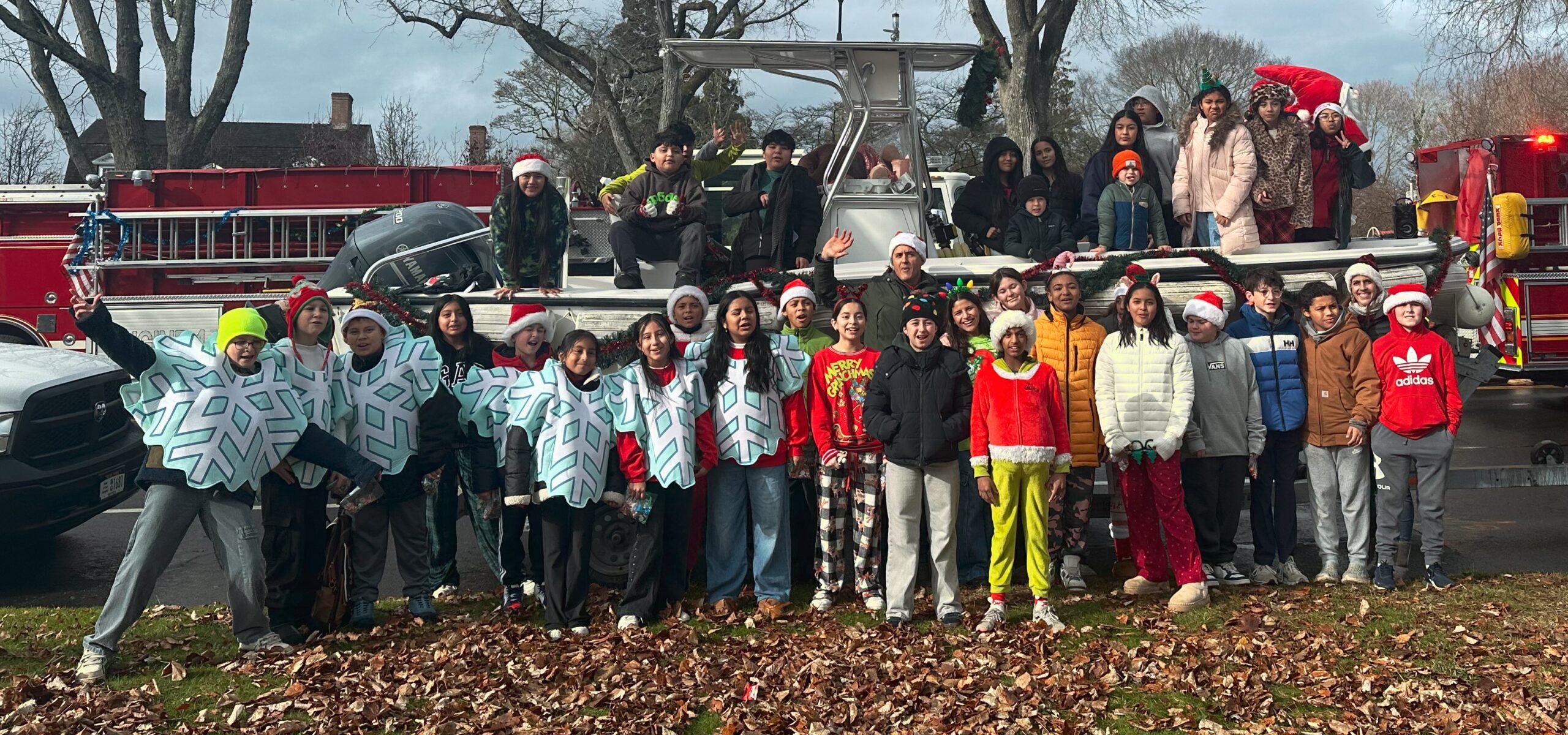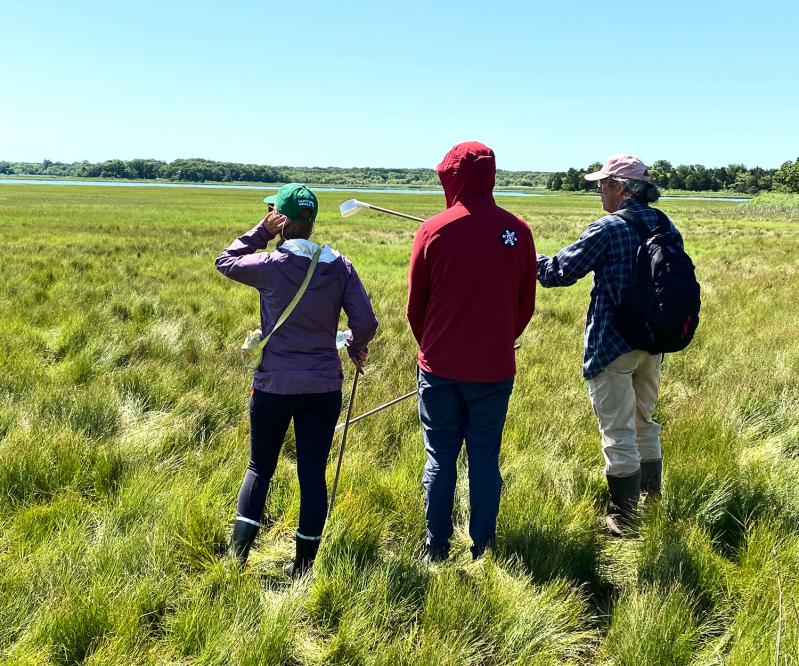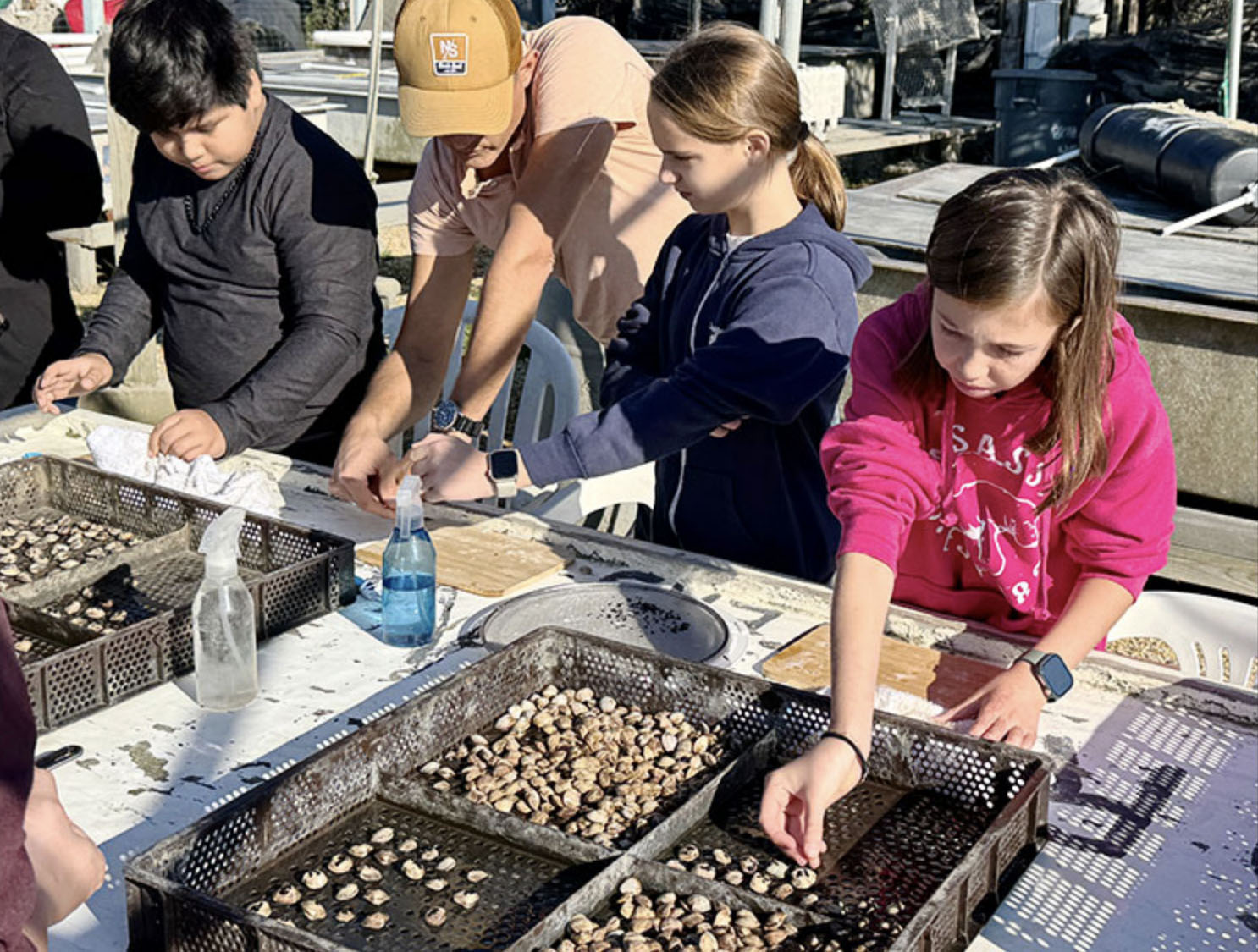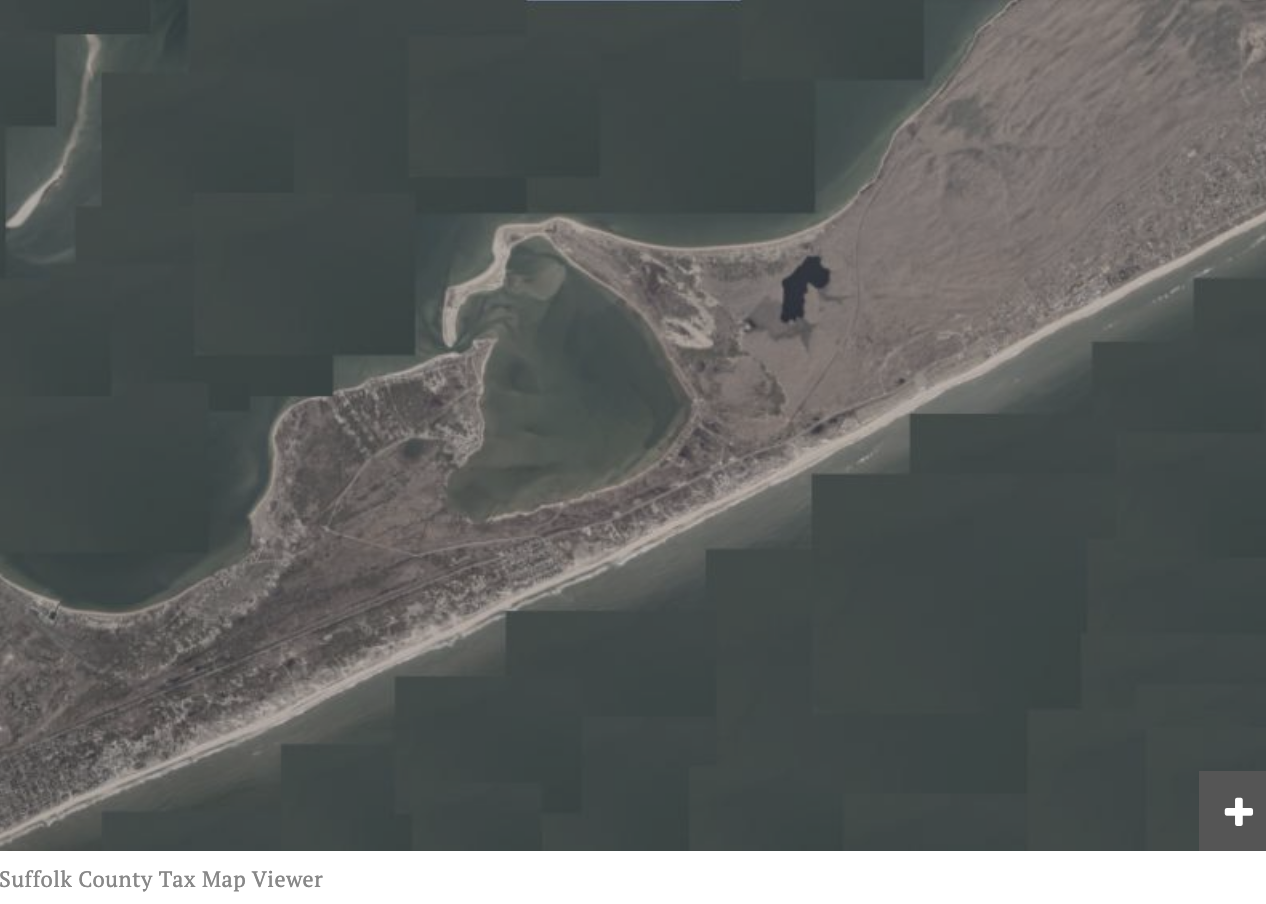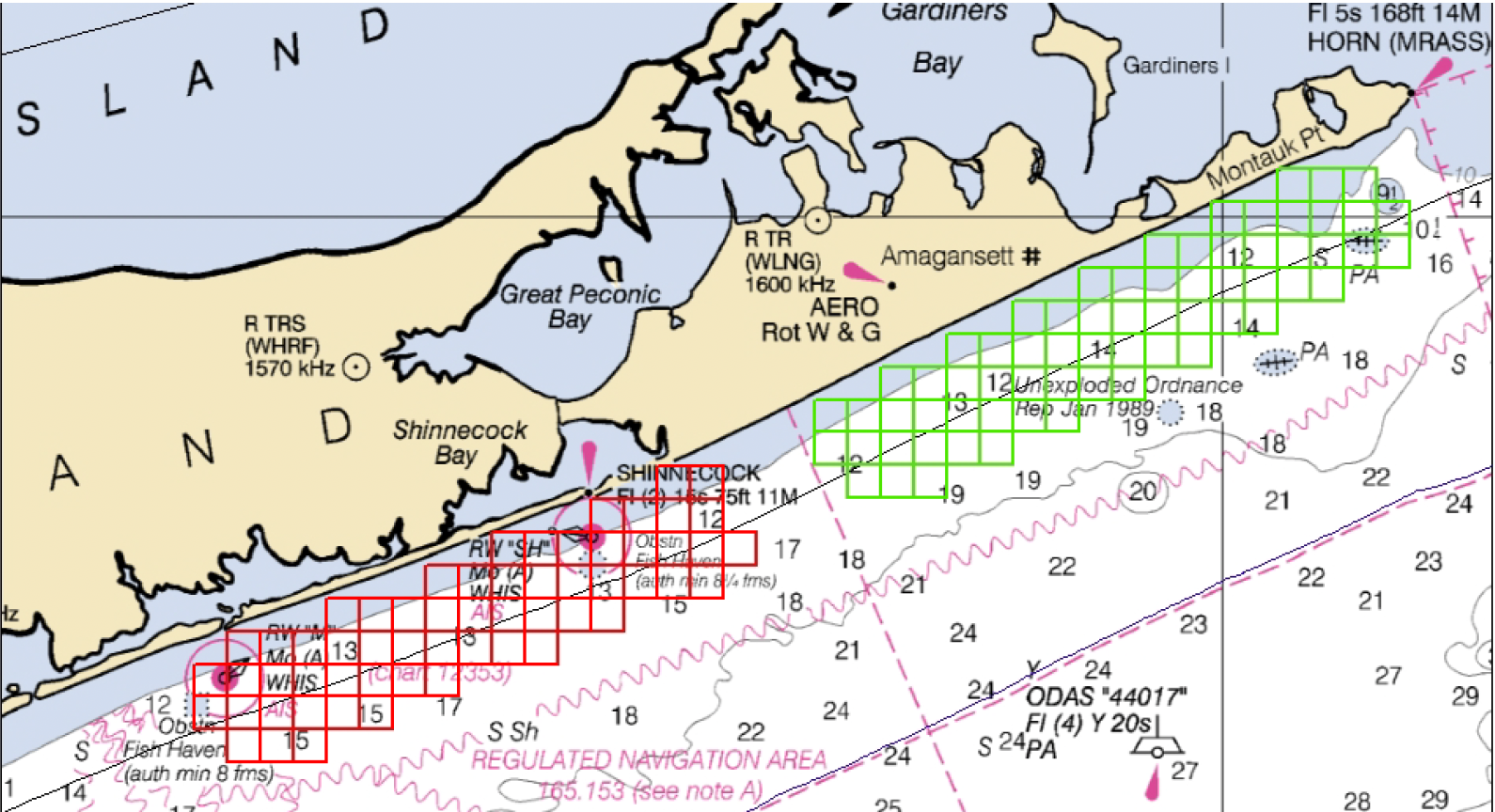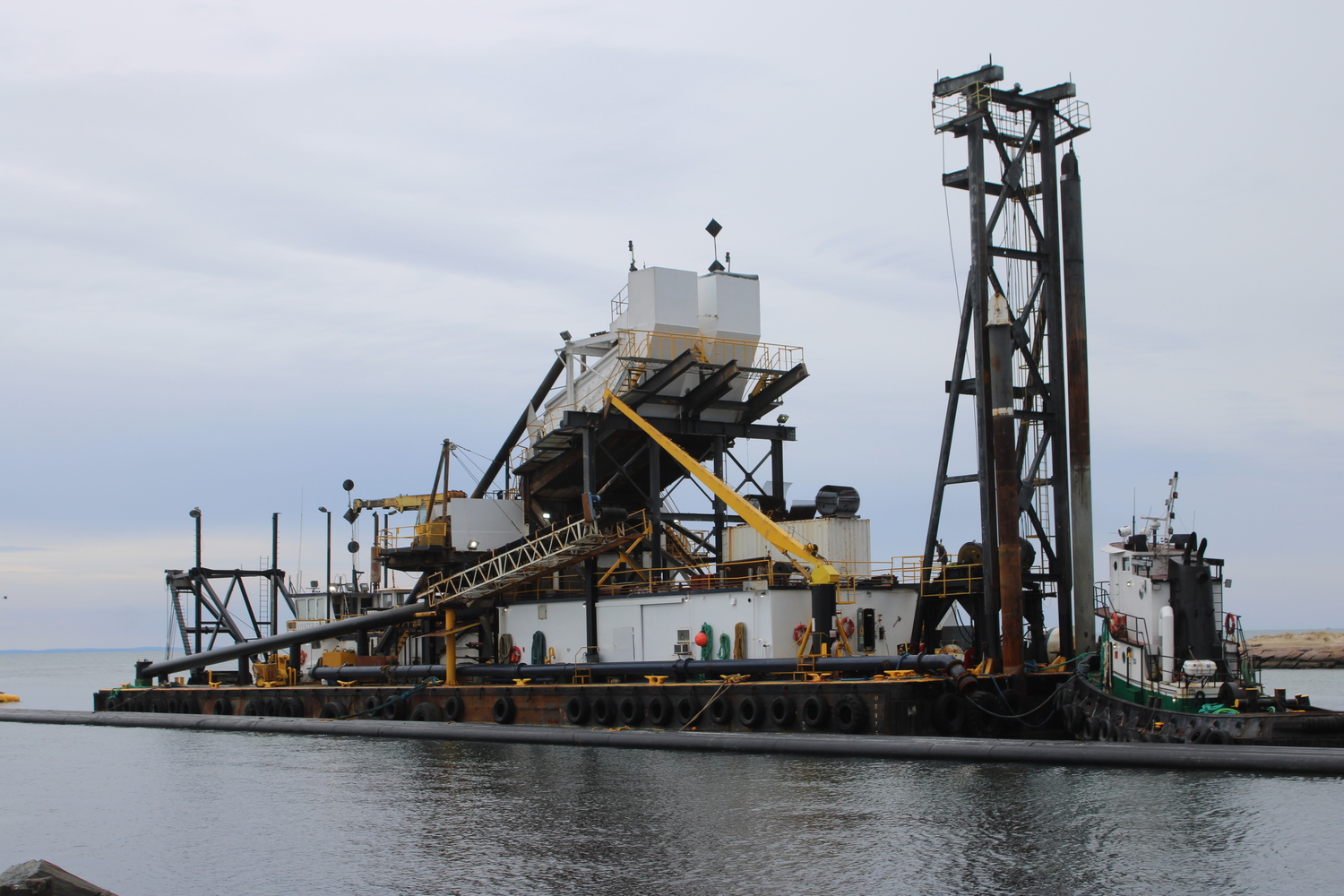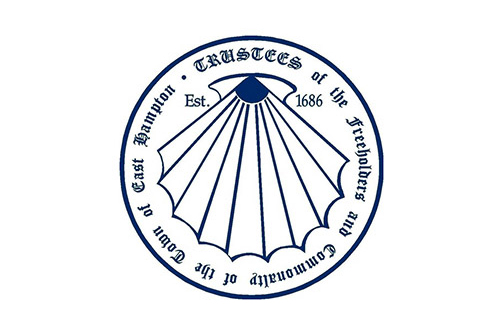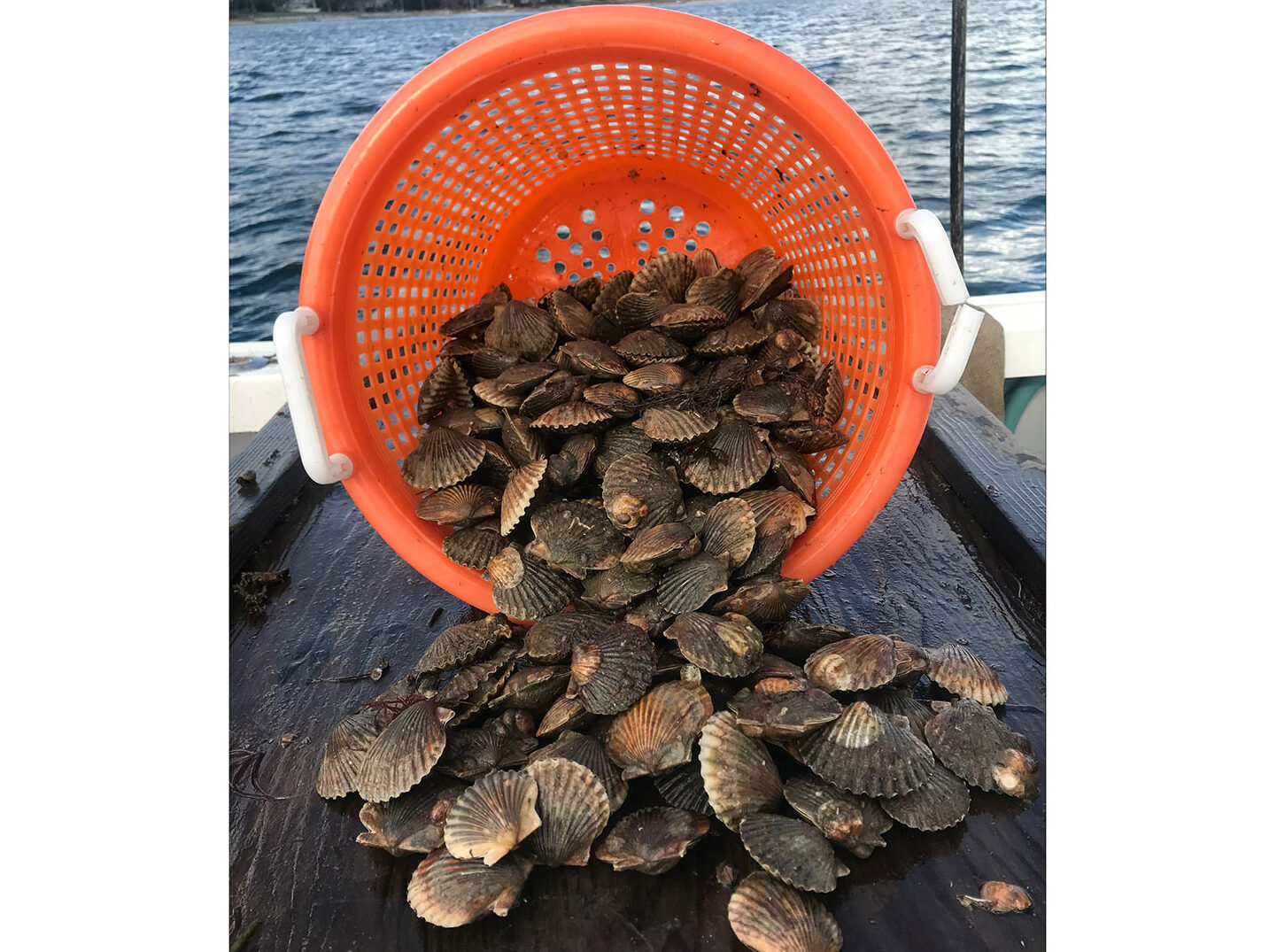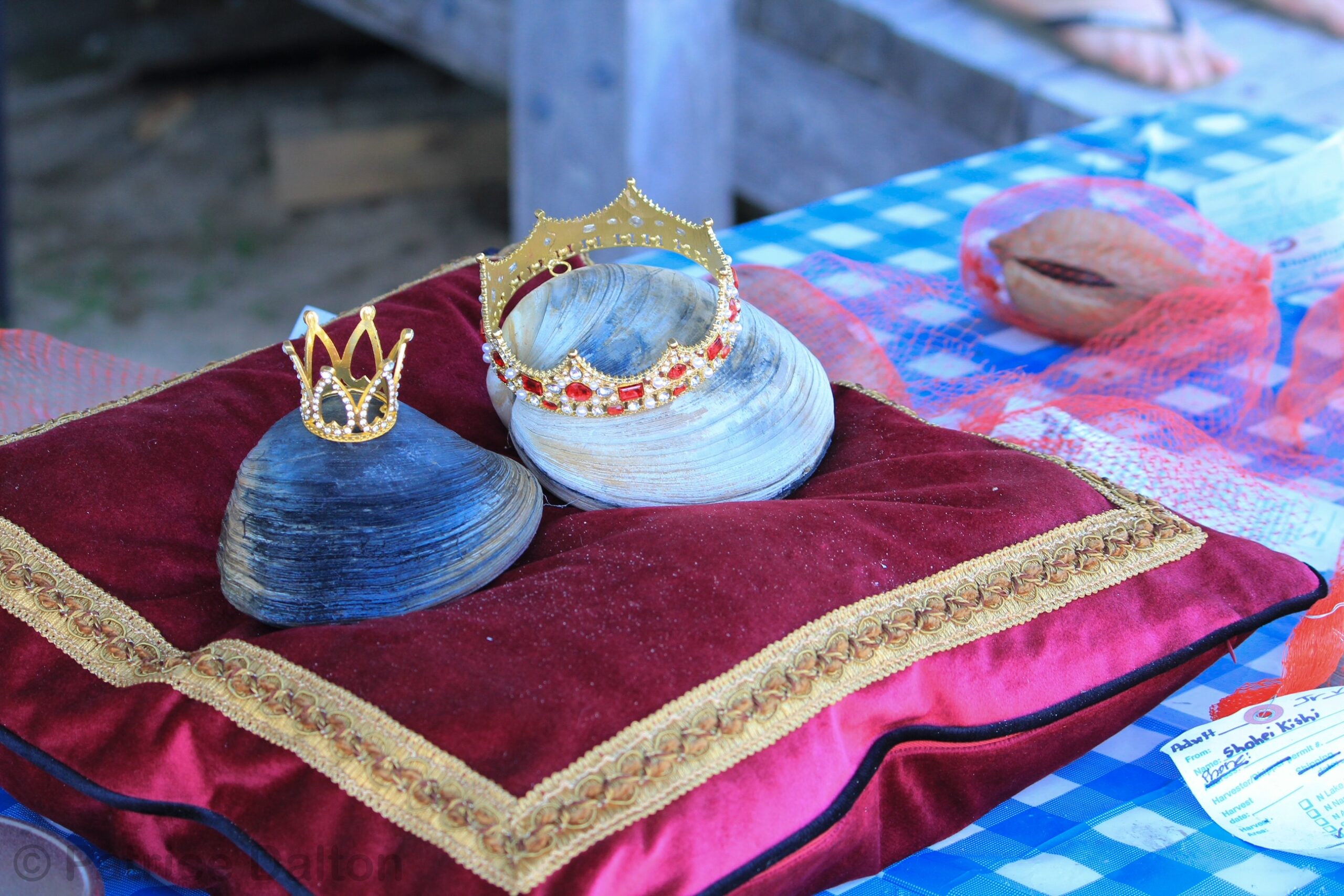Seasons Greetings & Happy New Year! Photo Susan McGraw-Keber Winter snow 2025 Photo Susan McGraw-Keber
Trustees John Aldred, David Cataletto (also an EHMS teacher) and Patrice Dalton were joined by Cataletto’s East Hampton Middle School Do Good, Be Good Club for the 2025 Santa Parade put on by the Village of East Hampton. The Students rode in or walked alongside the Trustee pump out boat tossing candy to parade attendees. It was a joyous occasion and a good time was had by all. The East Hampton Town Trustees thank the Village of East Hampton and all of this year’s sponsors for putting on such a wonderful community event.
John Aldred, right, surveying the Accabonac saltwater marsh with Kristin Schaven and Will Turman.Glyn Vincent photograph John Aldred, a Deputy Clerk of the East Hampton Town Trustees , is a former lifeguard, part-time ichthyologist, environmental analyst, and founding director of the East Hampton Shellfish Hatchery. A tall, slender man with a gray ponytail bun and metal-rimmed glasses, he has also been counting mosquitoes for the Suffolk County Division of Vector Control since 2017. Twice a month — during the new and full moon tides — he and his team of volunteers walk miles of boggy marshland looking for mosquito larvae.
Students in the East Hampton Middle School’s Do Good Be Good Club glued eelgrass seeds to clams at the East Hampton Town Shellfish Hatchery earlier this month. Photo by Durell Godfrey. Trustee and sixth-grade teacher at the Middle School, David Cataletto, was at the East Hampton Shellfish Hatchery on Three Mile Harbor to help glue eelgrass seeds to clams. It’s one of the projects the “Do Good Be Good Club” participates in to help grow eelgrass in our harbor waters. David formed the group only last year and already the club boasts over 50 members. The students work on projects that
After many years, the Trustees agreed at the November 10th meeting to initiate the project to open the east channel. Following years of discussion, the East Hampton Town Trustees, who have jurisdiction over most of the town’s waterways, bottomlands, and beaches outside of Montauk, have taken an initial step toward potentially opening the east channel of Napeague Harbor, which began to close early in this century and has been completely closed since 2012. Following another long discussion at their Nov. 10 meeting, the trustees voted to allocate up to $25,000 to Drew Bennett of D.B. Bennett Engineering to prepare an
November 12, 2025, Thursday morning, brought an important seasonal moment to Georgica Pond: the bi-annual mechanical opening to the Atlantic Ocean. Under crisp fall skies, the East Hampton Town Trustees carved a channel through the beach berm, allowing the Pond to reconnect with the ocean in a dramatic rush of foamy water and swirling sand. For many in our community, this event is more than a practical action—it’s a long-standing ritual that marks the changing seasons and the ongoing care we give to one of our most treasured natural places. Why the Opening Matters Each year, Georgica Pond experiences shifts in
The South Fork Wind farm monopile foundations to support its offshore substation and 12 turbines were installed in 2023. South Fork Wind The Trustees’ agreement with Orsted included a five-year study of fish migration near the landing site of the South Fork Wind Farm export cable that registers and documents annual samples of fish and various invertebrates from the ocean at Beach Lane in Wainscott and westerly. The documentation is a compilation of surveys conducted before, during, and after the construction of the wind turbines. The purpose of the survey inspection is to document the fish populations and the migratory
Fall Bottom Trawl Survey 2025 Cornell Cooperative Extension- Marine Program will be conducting a bottom trawl survey throughout NY state waters from Smith Point Inlet to Montauk Point on approximately November 17 – 23, 2025 (See chart below). The East Hampton Town Trustees commissioned the study of fish migration near the proposed landing site of the South Fork Wind Farm Export Cable. The Cornell bottom trawl survey will be conducted to provide a consistent sampling of finfish and invertebrates in the affected area (green grid) and an associated reference area (red grid). See chart above. Survey data will be used
Dredge Oyster Bay in Lake Montauk Inlet 2025 Photo Jack Motz The long-anticipated dredging of Lake Montauk began at the start of November with the arrival of the dredge Oyster Bay. The need for dredging became urgent as safe passage for approximately 500 fishing vessels utilize the waterway. For details, click on the link below. 27 East / east Hampton Jack Motz
The Trustee’s office located at 267 Bluff Road in Amagansett, will be unavailable to the public for office renovations. Monday, November 10th – Thursday, November 20th. Office staff is available via email: trustees@ehamptonny.gov Office telephone 631-267-8688. Please call in advance if a service or appointment is required. Meetings will be held normally as scheduled at Town Hall on the 2nd & 4th Monday evenings beginning at 6:30 PM. Thank you. The East Hampton Town Trustees
There has been confusion in years past regarding the Opening Day of Scallop season in East Hampton Town Waters. Since last Scallop season, the Town of East Hampton has updated the Town Code such that both Town and Trustee regulations align regarding opening day. Opening Day for Scallop Season 2025 will be Nov. 9, 2025. Town Code was amended Oct. 8, 2024 and now reads as follows: § 213-12 Escallops Escallops may be taken during the period, the beginning of which shall be determined by Town Board resolution under § 213-18, Special authority, or in the alternative, if no such resolution is
Sunday, October 5th, was perfect—the Amagansett Life-Saving Station was host to the Trustees’ 34th Annual Largest Clam Contest, and the event was showered with plenty of sunshine. Everyone enjoyed clam chowder, clam pies, live music from The Lynn Blue Band, and plenty of prizes for the winners of the Largest Clam Contest! The turnout was terrific, and as always, everyone had a great time! Congratulations to all the winners of the Trustee’s 34th Annual Largest Clam Contest! Trustees’ Largest Clam Contest Winners 2025 Photo Patrice Dalton This year’s event drew the largest crowd to date, with approximately 500 people in attendance! The drone
“As part of the fish monitoring study outlined in the SFW Fisheries Study Work Plan, the Stony Brook University team is conducting a regular visit to the sensor array off Wainscott today to collect data from sensors, replace batteries, and deploy new retrievable moorings alongside the previous moorings. As the Stony Brook team is deploying new moorings alongside the existing moorings there’s no change to the mariners briefing, our standard method for updating mariners on the presence of equipment in navigational waters. Members of the fisheries outreach team, in collaboration with the research team, have worked with the fishing community to select an alternative mooring, one that is smaller, lightweight and retrievable, and is more compatible with commercial fishing in response to the feedback we’ve received from the community on original deployment of cement moorings.”
